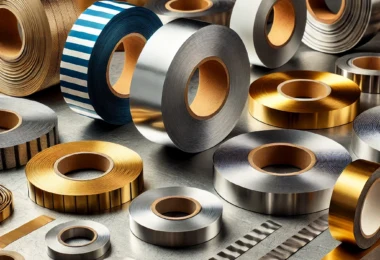When it comes to roofing options for your home, the choices can be overwhelming. However, residential metal roofing has emerged as a popular and reliable choice for homeowners. In this article, we will explore the various aspects of residential metal roofing, from its benefits to installation and maintenance.

Advantages of Residential Metal Roofing.
Residential metal roofing offers several advantages that make it an attractive option for homeowners. One of the primary benefits is its exceptional durability. Metal roofs can last for 50 years or more, outlasting many other roofing materials. This longevity makes them a cost-effective choice in the long run.
Metal roofs are also highly resistant to extreme weather conditions. They can withstand heavy rain, snow, hail, and even strong winds. Their ability to shed snow and ice quickly helps prevent structural damage to your home.
Types of Metal Roofing Materials.
There are various types of metal roofing materials to choose from, including steel, aluminum, and copper. Each material has its unique qualities and aesthetic appeal. Steel is the most common choice due to its affordability and strength, while copper offers a distinctive, elegant look.
Durability and Longevity of Metal Roofing.
Metal roofing’s durability is one of its standout features. Unlike traditional asphalt shingles that degrade over time, metal roofs maintain their integrity for decades. This durability is often backed by substantial warranties from manufacturers.
Energy Efficiency.
Metal roofs are energy-efficient, reflecting the sun’s rays and reducing heat absorption. This helps maintain a comfortable indoor temperature and lowers your energy bills. Additionally, many metal roofing materials are recyclable, making them an eco-friendly choice.
Environmental Benefits.
Metal roofing is eco-friendly in more ways than one. Its long lifespan reduces the need for frequent replacements, minimizing construction waste. Moreover, the recyclability of metal makes it a sustainable choice, contributing to a greener environment.
Aesthetics and Curb Appeal.
Today’s metal roofing comes in a variety of styles, colors, and finishes, allowing homeowners to achieve the desired look for their homes. Whether you prefer a modern or traditional appearance, there’s a metal roofing option to suit your tastes.
Installation Process.
Installing a metal roof is a precise process that involves preparing the existing roof and fastening the metal panels securely. It’s essential to hire experienced professionals for this task to ensure a watertight and durable installation.
Maintenance and Care.
Metal roofs require minimal maintenance. Periodic inspections and cleaning are usually sufficient to keep them in top condition. Routine checks for loose fasteners and sealant integrity can help prolong the roof’s lifespan.
Cost Considerations.
While the initial cost of metal roofing may be higher than some other materials, its long-term benefits, including reduced maintenance and energy savings, often outweigh the upfront expenses. Homeowners should consider the return on investment over the roof’s lifespan.
Common Myths About Metal Roofing.
There are misconceptions about metal roofing, such as concerns about noise during rain or lightning strikes. We’ll debunk these myths and provide accurate information about metal roofing’s performance.
Choosing the Right Metal Roofing Contractor.
Selecting a reputable roofing contractor is crucial for a successful installation. We’ll offer tips on how to find and hire a qualified and experienced professional for your project.
Case Studies: Successful Metal Roofing Installations.
We’ll share real-life examples of homeowners who have benefited from choosing metal roofing, showcasing their experiences and the transformation it brought to their homes.
Comparing Metal Roofing to Other Roofing Materials.
To provide a comprehensive overview, we’ll compare metal roofing to traditional options like asphalt shingles, wood, and tile. This comparison will help homeowners make informed decisions.
Conclusion
Residential metal roofing is a wise choice for homeowners seeking durability, energy efficiency, and a stylish appearance. With proper installation and maintenance, it can protect your home for decades. Consider the long-term benefits and environmental advantages when deciding on your roofing material.
Frequently Asked Questions
1. Is residential metal roofing noisier during rain or hailstorms? Metal roofing is not significantly noisier than other roofing materials when properly installed with proper insulation.
2. Can I paint my metal roof to match my home’s color scheme? Yes, metal roofs can be painted to match your home’s aesthetics. Consult with your contractor for color options.
3. How does the cost of metal roofing compare to traditional roofing materials? While the initial cost may be higher, metal roofing’s longevity and energy savings often make it a cost-effective choice over time.
4. Is metal roofing suitable for all climate types? Metal roofing is suitable for a wide range of climates and can withstand extreme weather conditions.
5. Are there any government incentives for choosing eco-friendly metal roofing? Some regions offer tax incentives or rebates for using energy-efficient roofing materials. Check with your local authorities for available programs.
In conclusion, residential metal roofing is an excellent investment for homeowners looking for a durable, energy-efficient, and stylish roofing solution. If you have further questions or need professional guidance, please access the provided link for more information.
















